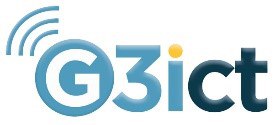Challenges in the Accessibility of Workspaces
Posted on April 26, 2022

Ph.D. in Architecture (Urban Planning & Accessibility), Expert in Universal Accessibility in the Physical Environment
When addressing the issue of accessibility in workspaces or even going further and conceiving universal design for inclusive workspaces, we must first start from the existing reality. To this end, it can be helpful to identify some challenges in this field, which have yet to be met:
The first of these is the consideration of its necessity; Accessibility and Universal Design understood as something basic and intrinsic in an everyday activity such as working. There are still people who find it strange or exceptional to have, for example, a blind colleague in the office working next to them. It is a mistake to assume that this has been overcome, because although there is no longer the stigmatization that there was only a few decades ago, the truth is that there is still a long way to go to reach a situation of normality. To this end, we must bear in mind that the work environment is a determining factor in people's inclusion and that not being able to access a job due to a lack of accessibility (due to an acquired or birth, temporary or permanent difficulty) has repercussions on other aspects of life (economic, psychological, etc.). Many organizations see it as a regulatory obligation, not as a business opportunity. Without going into questions of law and equal opportunities, are these managers aware that they are missing out on the opportunity to have some very bright professionals in their team just because they do not consider accessibility in their company's workspaces? Functional limitations do not have to be identified with work performance or professional excellence; two concepts that have traditionally been mixed up.
The other major challenge is the understanding of what we mean by "workplace". Traditionally, it has been identified with a chair and a desk, but what about the accessibility of all the equipment and devices needed to work? Computer accessibility (software and hardware) is the most obvious example. Other less obvious but highly relevant factors are environmental factors: lighting, temperature, humidity, noise... with a very different impact on the worker depending on their sensitivity and resistance (this is also accessibility). But we must also consider that work is not carried out automatically in a chair; there are also meetings, moments of relationship and rest, the need to go to the toilet or to the cafeteria... so all these associated spaces must also be included in this concept. Finally, to complete this challenge on the concept of the workplace, it is necessary to consider the new scenarios of which I would highlight two: First, the trend towards temporary, non-fixed jobs, where there is no longer a desk with a family photo, a cup of coffee and a mountain of accumulated papers. The trend now is towards shared spaces where jobs are reserved on a temporary basis. What impact does this have on Accessibility? How can this be solved without denying the evolution of society? And the second new scenario is teleworking, aggravated by the pandemic situation which has led to a massive development of its use. But telework is here to stay and offices will no longer be the same after Covid-19. Partial teleworking for one or more days a week, or full teleworking, are now commonplace in companies. How should accessibility be considered here? What role and responsibility does the company have in this task?
So here are two challenges with questions to motivate an active attitude towards accessibility and universal design in the workplace, and to avoid the recipes and clichés of the past that reduce it to mere compliance with rules and regulations.
This blog post is part of a collaborative effort of G3ict, Steelcase, and other global partners to understand, define, and support more inclusive workplaces. For more information, please go to this link Inclusive Workplace Community of Interest | International Association of Accessibility Professionals (accessibilityassociation.org).





























